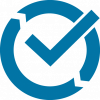Related Content
 |
An Agile Approach to Change Management Many organizations are reluctant to introduce new tools or technologies, or even to update existing ones. The reason is often framed in terms of risk management, but agile teams already have the tools to manage the risk of change: testing and experiments. These approaches together eliminate gaps in risk identification. |
|
 |
Continuous Exploratory Testing: Expanding Critical Testing across the Delivery Cycle Continuous testing entails executing automated tests to obtain rapid feedback on business risks. Where does that leave exploratory testing? Obviously, it doesn’t make sense to repeat the same exploratory tests across and beyond a sprint, but exploratory testing can be a continuous part of each software delivery cycle. |
|
 |
Why Smart Testing Requires Strategy and Flexibility You can’t expect to achieve successful testing without the proper strategy, but you also can’t create a strategy that doesn’t allow you to adapt along the way. Think about why you’re testing, and be confident enough to change course if you feel it can benefit your team and project. |
|
 |
Why You Should Have an Observer on Your Project Team If your project team suffers from misunderstandings or squabbles, it may be valuable to designate an observer role. This person would sit back and pay attention to whether there are patterns of miscommunication, interruptions, or conflicts that those in the conversations may not notice, helping resolve problems. |
|
 |
Driving Continuous Improvement to the Entire Organization In traditional agile approaches, retrospectives are valuable to team improvement. However, when teams encounter organizational issues beyond their control, such as project structure, interorganizational communication, or resources, it's more difficult. Here's how to expand continuous improvement to the whole company. |
|
 |
Why Musicians Can Make for the Best Testers Testers need to be both creative and analytical, and those are two features that are very common in musicians. Sure, it might not be writing code, but we’re learning more and more that the building blocks and innate qualities that make for good testers can be more important than the testing skills themselves. |
|
 |
Creating a Culture of Kindness Employees tend to follow the model set from above, treating each other and their customers the way they’re treated by their superiors. Leaders set the tone for the entire organization, and that means that kindness starts at the top. But whatever level you're at, you can create a culture of kindness for everyone. |
|
 |
Using Feature Flags to Boost Testing and Deployment A feature flag is a configuration setting that lets you turn a given feature on or off. There is no need for a feature to be complete before you can start testing—as soon as the first piece of code is merged, you can turn the flag on in your test environment and begin. This also reduces risk. Do you use feature flags? |






